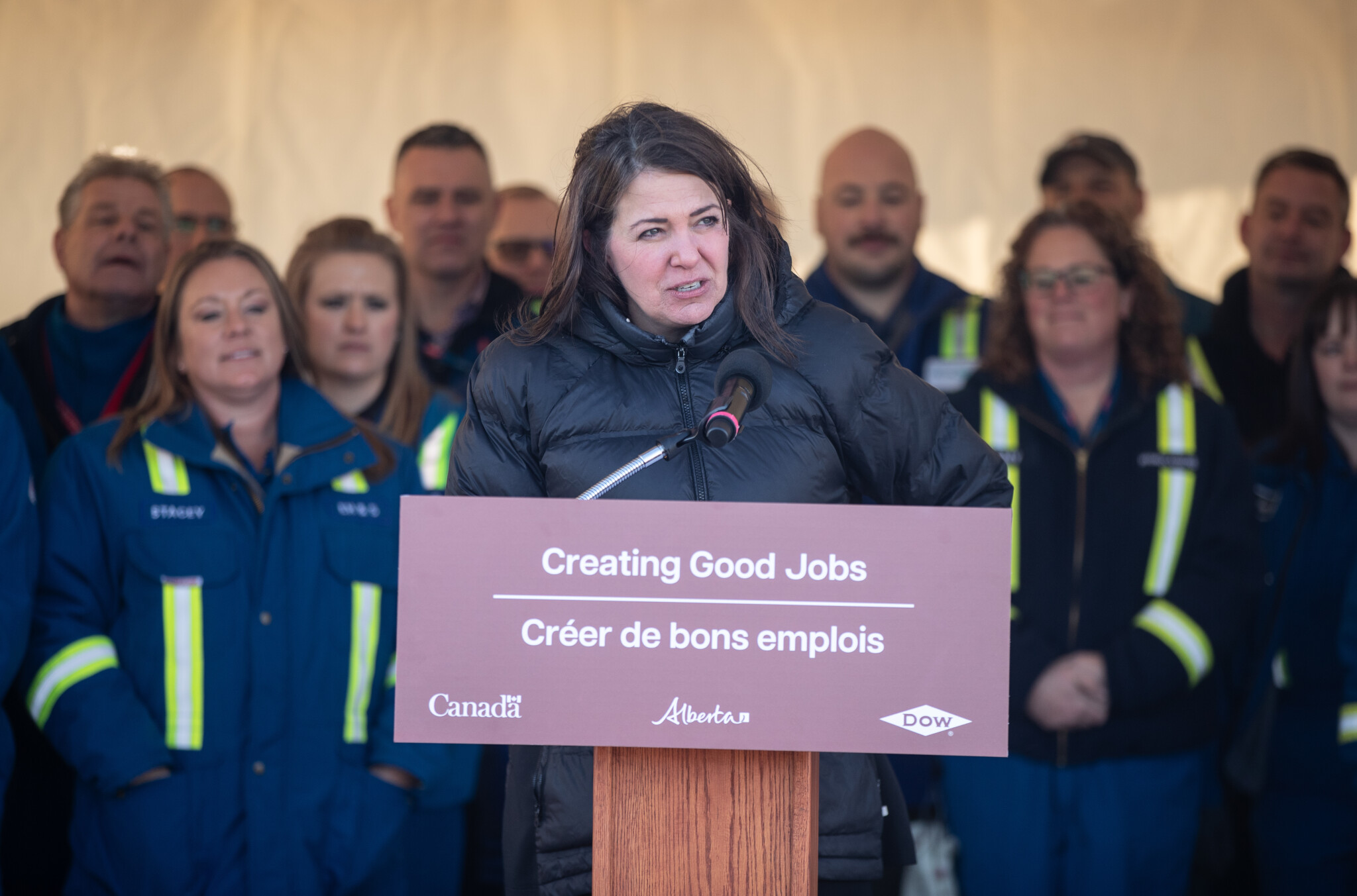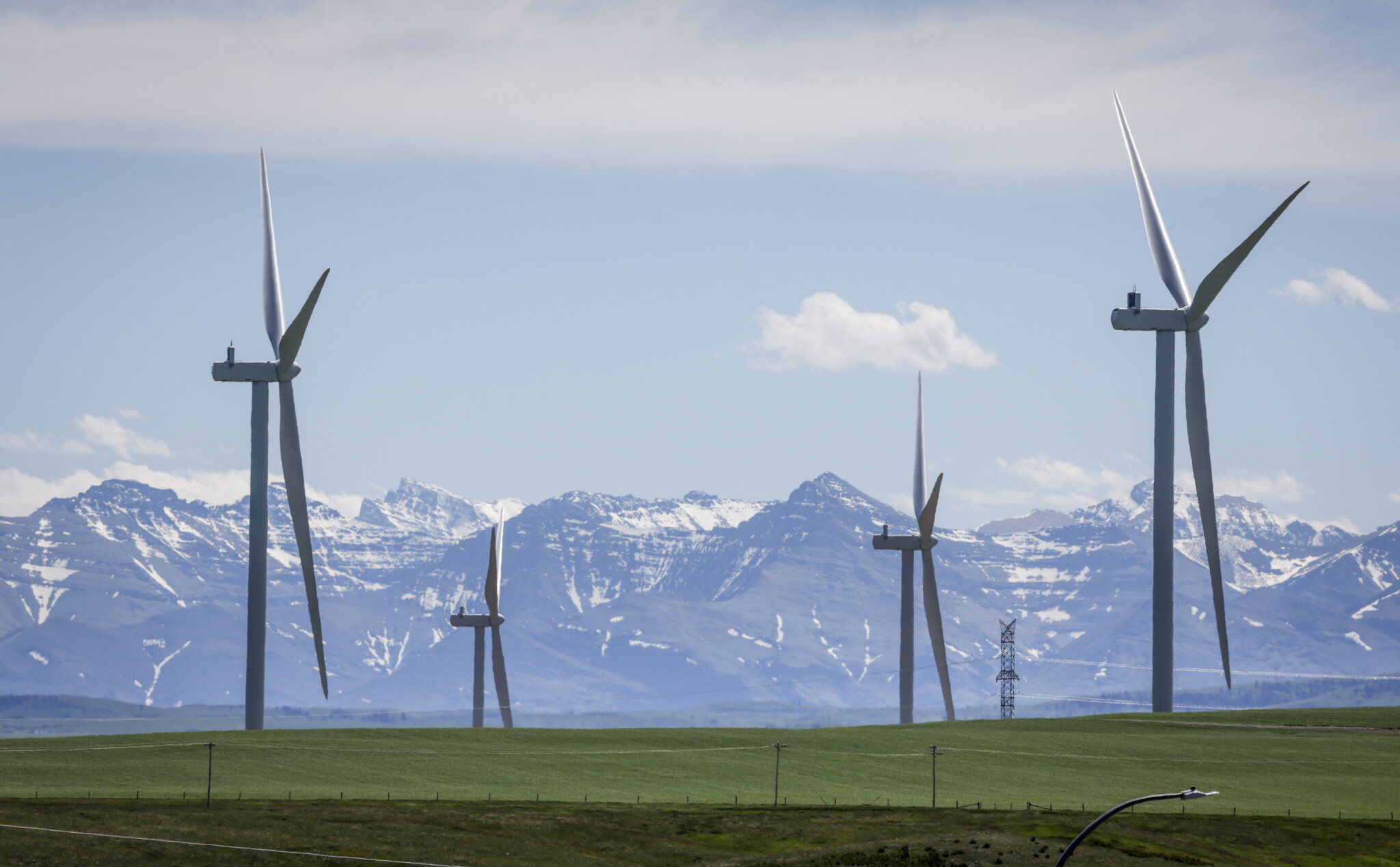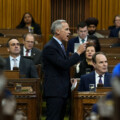
Canada has a major economic opportunity in the global low-carbon economy, if it gets its climate and energy policies right. Those policies should be informed by principles like leveraging the ingenuity of markets and free enterprise, limited government, and respect for provincial jurisdiction. The following article is the latest installment of The Hub’s series sponsored by Clean Prosperity exploring the why, what, and how of conservative climate policy.
As former staffers in federal and provincial conservative governments, we are both proud to have been part of taking down climate policies that imposed too high a cost on Canadians.
One of us helped take Canada out of the Kyoto Protocol, and the other worked on canceling renewable electricity contracts and energy conservation programs in Ontario. These were the right moves because the policies were not in the best interests of Canadians and Ontarians.
But for conservatives to cancel ineffective policies and withdraw from flawed international agreements isn’t enough. Stopping there misses a critical opportunity to advance Canada’s low-carbon economic growth and redefine what conservative climate policy should look like.
Canadian conservatives should stop letting their views on climate be defined in opposition to progressive views. Instead, we need to take the lead in defining our own policy vision.
Conservatives can start by taking pride in our record on climate policy and then build on those past successes with sound policy prescriptions grounded in economic first principles. We can turn climate policy into an asset for conservatives, instead of constantly playing defence.
From the Canada-U.S. Air Quality Agreement signed by Brian Mulroney, to the decoupling of Canada’s greenhouse gas emissions from economic growth and restrictions on coal-fired power under Stephen Harper, conservatives have proven that they can deliver environmental policy that works for Canadians. We need to take ownership of our many accomplishments and figure out how to take them to the next level.
The economic rationale for a strong conservative climate policy now seems undeniable. Low-carbon economic growth offers enormous opportunities for Canada and for enhancing Canadians’ standard of living. We’ve got the human and natural resources to succeed in building an exceptionally productive economy and delivering well-paid employment while also reducing emissions.
We can grow our economy with a diversified energy development strategy that would see Canada provide the oil and gas our world still needs while becoming a world leader in the low-carbon energy of the future. We can do it by making use of our country’s many natural advantages, like Canada’s rich potential for geological carbon storage.
Success in this mission is critical not only for growth and prosperity but for basic fiscal responsibility and autonomy. For too long, Canadian public policy has been shaped in reaction to external forces—whether it’s creating climate policy on the fly in response to Obama-era vehicle emissions standards and Biden’s multibillion-dollar Inflation Reduction Act incentives, or allowing provincial budgets to be determined by OPEC’s manipulation of world oil prices (as the late Jim Prentice famously observed). It is time for us to stop reacting and start setting our own course.
If Canada doesn’t move quickly to seize opportunities for low-carbon economic growth, we’re at risk of perpetuating our dependency—as China establishes its dominance over renewable energy, Saudi Arabia makes plans to rule a $700 billion global hydrogen market, and other nations pull ahead in their deployment of nuclear power generation.
Fortunately we’re starting from a position of strength—especially in Alberta, ironically the province most-maligned for its climate file. It might surprise you to learn that the most innovative city in Canada isn’t Toronto or the tech hub of Waterloo, Ontario—it’s Calgary, as measured by patent filings.
A conservative approach to climate policy naturally puts human ingenuity and innovation at its centre. Every one of those Calgary patents has regular people behind it—engineers, lab technicians—working to solve a real-world problem. Those ideas often get turned into reality by workers in Edmonton’s refinery row, the welding shops and laydown yards of Nisku, and the low-carbon industrial supercluster developing in Alberta’s Industrial Heartland—from where they’re deployed across the province and beyond.

Alberta Premier Danielle Smith speaks at the Dow Chemical announcement, that will finalized plans to construct the world’s first net-zero carbon emissions ethylene and derivatives complex, in Fort Saskatchewan Alberta, on Wednesday November 29, 2023. Jason Franson/The Canadian Press.
We should be looking at Alberta as an example of how conservatives can lead on climate policy. The province’s net-zero diversified energy strategy, launched by UCP Premier Danielle Smith, is rooted in a long-standing market-based approach to fostering innovation. Under the leadership of PC Premier Ed Stelmach, Alberta was the first jurisdiction in North America to introduce industrial carbon pricing in 2007, which evolved into the current TIER system in 2019 under UCP Premier Jason Kenney. This system is based on carbon pricing, a market mechanism that rewards companies for cutting their emissions, and has been so successful that it inspired the federal government’s own system for industry.
Granted, there’s still room for improvement—Alberta can do more to attract low-carbon investment, and there are adjustments needed to keep the TIER system working well. But TIER has successfully leveraged market competition, not top-down regulation, to get companies to find innovative ways to be more efficient and reduce pollution, steadily driving down the emissions intensity of Alberta’s oil production. It’s this kind of clear-eyed approach to profitably developing Canada’s resources while also cutting emissions that should underpin a conservative approach to climate policy.
Now Alberta’s industrial carbon pricing system is helping to drive exciting new investments in technologies like direct air capture, which pulls carbon dioxide straight out of the air to be buried underground. We’ll be able to mine the air just as we’ve mined the earth, and it’s market-based incentives that will drive the innovation to make Canada a world leader in this new technology. This is not a dream—construction is happening right now at a Canadian company’s facility in Alberta.
Alberta’s approach should inspire conservatives to imagine what we might be able to achieve for Canada as a whole. It’s true that the idea of conservatives leading on climate runs counter to what party staffers, elections teams, and candidates have been told for decades. But, as Sean Speer argued at the outset of this series, Canadian conservatives are actually well suited to developing a climate policy that reconciles protecting our rich inherited legacy with technological dynamism.
We agree. We think Canada can best achieve this balance with conservative principles, like leveraging the ingenuity of markets to grow the economy and cut emissions instead of using top-down diktats. We can and should enable much more private low-carbon investment instead of running up public debt as the default approach to emissions reduction.
One of us recently argued that conservative climate policy needs to start with a federal government that respects provincial jurisdiction. Ignoring the blueprints of Canadian federalism has landed us in a rut where fighting between the provinces and an overly-intrusive federal government is preventing progress.
Getting the foundational principles right is the first step. Where do we go next?
A conservative climate plan for Canada needs to be Canadian-built and Canadian-owned, not decided at international meetings. It needs to be drafted in close consultation with business and industry, not imposed on them. It needs to be clear, straightforward, and durable so that Canadians understand where we’re going and can feel confident that we won’t suddenly change course. It needs to leave behind the false binary that says Canadians have to choose between climate action or economic growth.
We can set Canada on a path to net-zero emissions by building up, not by shutting down. That means driving investment in innovative Canadian technologies that not only help us address our emissions at home but that we can profitably export abroad.
Above all, a conservative climate plan needs to not only be affordable for Canadian families, businesses, and farmers, it needs to make things better for them. A conservative vision for low-carbon growth can and should make people’s lives better—not cost them money.
That means building new homes that are affordable, both to purchase and to heat and cool. It means low-emitting vehicles that fit household budgets. It also means an end to nonsensical interference from Ottawa, like adding unnecessary layers of conflicting policies when the industrial carbon pricing system can drive the necessary emissions reductions.
Technology and markets work together to reduce industrial emissions, and they can also help Canadian families save money even as they cut their carbon footprints. A rapid, all-or-nothing push towards full electrification of transport and home heating is expensive and impractical in a big, cold country like ours. Conservative climate policy should be pragmatic, promoting middle-ground technologies that don’t make perfect the enemy of good. That includes plug-in electric hybrid vehicles and hybrid heating systems. These technologies are well suited to Canadian conditions and can deliver cost savings to families by reducing their energy bills (and emissions too).
A conservative climate policy focused on low-carbon economic growth and affordability for Canadians, powered by human ingenuity and markets, offers a way to help Canada build national prosperity and tackle some of our biggest challenges.
We believe that credible climate plans grounded in conservative principles are a way for conservatives to help Canada and Canadian families. They help us make the case to an even broader base of voters that conservatives are worth supporting—and worth electing to government.
This article was made possible by Clean Prosperity and the generosity of readers like you. Donate today.









